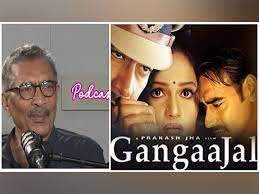Prakash Jha on how shifting socio-political factors impact his films: “There can’t be stories without conflicts”
Beyond the glitz, there is more to the story of filmmaker Prakash Jha’s transition from bystander on a movie set to director. His movies, like “Damul,” “Mrityudand,” “Gangaajal,” and others, aimed to depict the sociopolitical landscape of India. In a shifting economic environment, Jha examines topics including caste, power relations, and cultural changes. In addition, his art depicts the intricacies of rural life, including the shifting roles of women and the fallout from political shifts.
The renowned director discussed his experiences and how the shifting socio-political landscape influenced his films in an exclusive chat with ANI.

“People consider the films I create to be very groundbreaking. However, I don’t believe so. All I’m attempting to do is describe the tales that already exist or that emerge over time. For instance, the question of why democracy has failed globally has absorbed me entirely for the last five or six years. The system exudes an air of unease. People no longer have faith in each other. I believe something fresh will occur,” he said.
A filmmaker well-known for bringing a certain level of disruption and producing issue-based films, Jha said, “There can’t be tales without conflicts. A tale cannot exist if there is no tension.
He discussed “Damul,” the film he made in 1985. The main themes of the 1984 rural Bihar film are caste politics and bonded labor as means of oppressing the lower castes in the region. The complex social and political dynamics of the state are shown in his films.
“The movie ‘Damul’ was my debut. As a youngster, I witnessed most of the things I portrayed in that video, so you can only imagine how disturbed I must have been. Everything about the caste system, bonded labor, and untouchability. My dad, my Pardada (great grand father), had relocated the basti to his fields since those were the only places they could find employment. It was hence known as my dada’s Chamtoli. Additionally, none of the Dalits who had previously worked had the right to get water from the Brahmins’ well. However, they would use fire to cleanse the well in the event that someone accidentally climbed it. They would then fill it with water.”
“Hip Hip Hurray” was the first movie that Jha filmed, while “Damul” was the first screenplay he had written. He spoke about his experience working with Gulzar on the movie in 1984. That was just over a cup of tea, or something. Along with Gulzar sahib, I co-wrote the script for the movie. We became close to one another. It worked out perfectly since he wrote the movie’s music as well. After “Damul,” I wrote the majority of the movies that I directed.”
He also discussed the 1989 movie “Parinati,” which was adapted from a Vijaydan Detha short tale.
“My favorite movie, Paranati, is the one I made after ‘Damul.'” It was a Rajasthani folktale. The original tale was written by Vijaydan Detha, and I stumbled onto it while working with someone else on the script. I can’t remember the name. And we created ‘Mrityudand’ after ‘Parinati’.”
The renowned filmmaker, who has chosen cinema as a communication vehicle, mentioned two significant shifts that affected his thoughts and way of thinking while creating films: the Mandal movement and reforms.
The Mandal Commission’s 1990 recommendations, which included hiring and educational reservations for members of the Other Backward Classes, were approved by then-prime minister Vishwanath Pratap Singh. Jha has been impacted by these changes in the political landscape.
“The OBCs, the backwards, are in charge of politics…Due to the 1991 economic changes, the economy opened up and money became accessible. Additionally, the underprivileged class gained control over the wealthier class. Thus, the balance of the right to spend changed. as well as the changes it brought about to our system. For better, worse, or any other reason. ‘Mrityudand’ is just that, then.”
In the 1997 movie “Mrityudand,” Madhuri Dixit, Shabana Azmi, Ayub Khan, Mohan Agashe, and Om Puri all made appearances.
A toddler used to say, “At that time, my father is a landlord. Mera baap kya hai zaminadar hai.” And he used to be pleased with it. However, the subsequent generation in Bihar said, “Mere baap kya hai thekedar hai,” which caused the Zamindar to lose ground to the Thekedar. But despite all the advancements, women remain the one thing that every class has in common: they still suffer. I narrate three stories. I have therefore recounted the tale of the market’s opening, politics, power, and such via the lives of these three women, Shabana Azmi, Madhuri Dixit, and Shilpa (Shirodkar).
Speaking of his encounters with Mandal politicians Mulayam Singh Yadav and Lalu Prasad, he said, “I met everybody.” I was paying close attention.”
“I recall sometimes taking part in the JP movement. That was a pretty early age for all of us. But our colleges were already where we were. So, we were aware of everything was taking place. And when I created ‘Mrityudand,’ I was able to remember and make the connections,” he said.
“I didn’t do anything. I wasn’t actively participating in the demonstration or joining it, but I was involved because, at the time, everyone was infatuated with socialism and the Left,” he said.
Among his critically appreciated films are Damul, Mrityudand, Gangaajal, Apaharan, and Raajneeti. The filmmaker has won numerous National Awards.







